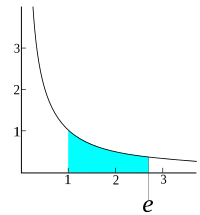
Photo from wikipedia
Background Obsessions and compulsions are heterogenous but can be classified into obsessive-compulsive disorder (OCD), body dysmorphic disorder (BDD), hoarding disorder (HD), hair-pulling disorder (HPD), and skin-picking disorder (SPD). OCD is… Click to show full abstract
Background Obsessions and compulsions are heterogenous but can be classified into obsessive-compulsive disorder (OCD), body dysmorphic disorder (BDD), hoarding disorder (HD), hair-pulling disorder (HPD), and skin-picking disorder (SPD). OCD is in itself heterogenous, with symptoms clustering around four major symptom dimensions: contamination/cleaning, symmetry/ordering, taboo obsessions, and harm/checking. No single self-report scale captures the full heterogeneity of OCD and related disorders, limiting assessment in clinical practice and research on nosological relations among the disorders. Methods To provide a single self-report scale of OCD and related disorders that respects the heterogeneity of OCD, we expanded the DSM-5-based Obsessive-Compulsive and Related Disorders-Dimensional Scales (OCRD-D) so that is also includes the four major symptom dimensions of OCD. A psychometric evaluation and an exploration of the overarching relations among the dimensions were conducted using an online survey which was completed by 1,454 Spanish adolescents and adults (age span = 15–74 years). Approximately 8 months after the initial survey, 416 participants completed the scale again. Results The expanded scale showed excellent internal psychometric properties, adequate test-retest correlations, known groups validity, and correlations in the expected directions with well-being, depression/anxiety symptoms, and satisfaction with life. The higher-order structure of the measure indicated that harm/checking and taboo obsessions formed a common disturbing thoughts factor and that HPD and SPD formed a common body-focused repetitive behaviors factor. Conclusion The expanded OCRD-D (OCRD-D-E) shows promise as a unified way to assess symptoms across the major symptom dimensions of OCD and related disorders. The measure may be useful in clinical practice (e.g., screening) and research, but more research on construct validity, incremental validity, and clinical utility is needed.
Journal Title: Frontiers in Psychiatry
Year Published: 2023
Link to full text (if available)
Share on Social Media: Sign Up to like & get
recommendations!